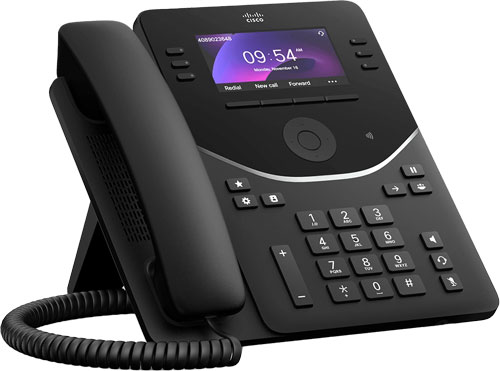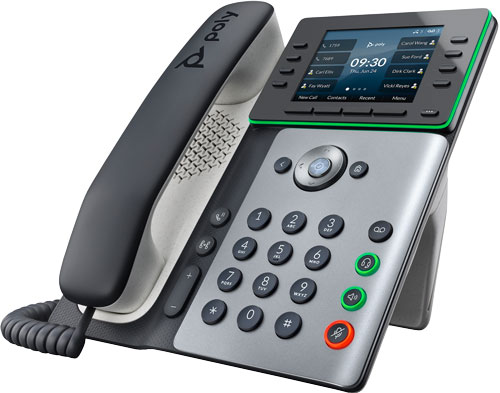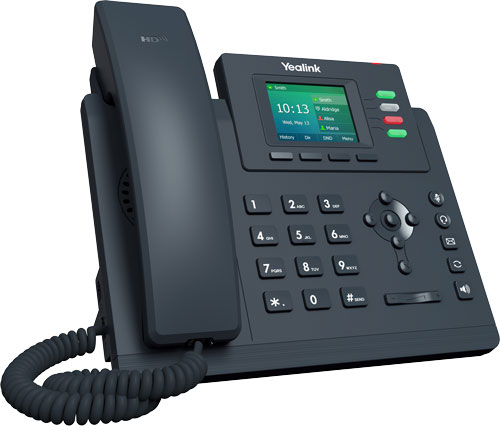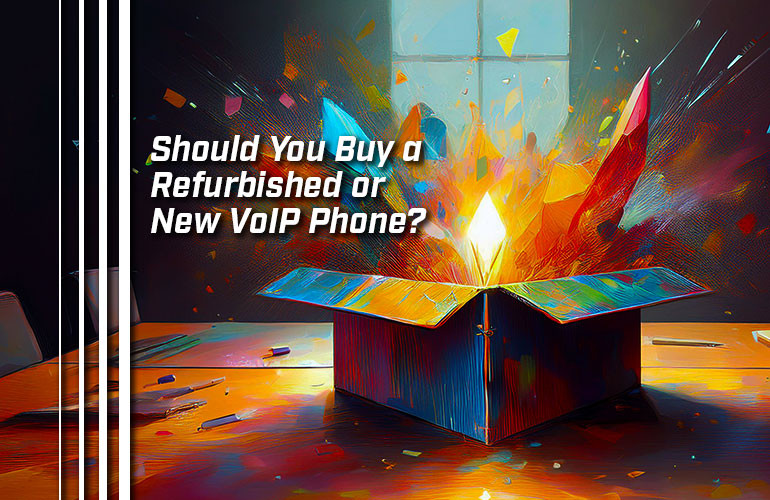The bottom line: we all need to pay attention to it. And when investing in communications technology, one way of helping your bottom line is to buy refurbished instead of new. But are the short-term savings worthy of a long-term investment?
Refurbishing means bringing a used product to as close to like-new condition that it can be brought.
We here at IP Phone Warehouse don’t refurbish phones ourselves. Instead, we try to partner with the most reliable refurbishers out there to get you communications solutions for the best price.
In this blog, we use our years of experience looking for the best refurbished phones to offer you clear, actionable advice.
We’re going to cover a bunch of things to think about when shopping for a refurbished VoIP phone.

Reliability of Refurbisher
There are two types of refurbishers: first-party and third-party.
Some companies, like Cisco, do in-house refurbishing, which is a much stronger guarantee of quality than a third-party refurbisher. We’ve had numerous customers say that Cisco Refresh phones (that’s the name of their refurbishing program) are essentially indistinguishable from new phones. So Cisco certified remanufactured phones are a great choice.
Third-party refurbishers, however, can be very reliable. Try to determine that they’re a professional company going through a checklist of repairs and not just a mom-and-pop shop stuffing a phone back in a box.
It’s like a car repair shop that has a list to make sure they check the brake pads, the spark plugs, the motor oil, and so on. You want every aspect of the VoIP phone to be checked.
Some VoIP phone refurbishing companies have different grades of refurbishing, so a Grade A refurbished phone is like new, a Grade B has this or that wrong with it, and so on. Because communications devices are so important for how business is done today, we strongly recommend that you get a Grade A (or equivalent) refurbished phone.
The checklist is important and we always look for companies with thorough refurbishing lists. You want to be sure that the refurbishing company is spending the time that’s required to bring the phone back to like-new condition. You want a guarantee that the work is being done properly. Here are some things that must be done:
- Factory reset. The previous owner’s information should be completely erased.
- Handset and speakerphone verified. The phone’s audio components should be tested to ensure they’re in proper working order.
- Broken/used components replaced. Any broken button, display, or other component that shows signs of wear-and-tear should be replaced.
- Cleaned and sanitized. The phone should be thoroughly cleaned and sanitized.
- Repackaged. The phone should be neatly packaged with all original package contents.
Some companies also upgrade the phone’s firmware to the latest release. While convenient, this isn’t a necessary step. You’re going to check the firmware version anyways.
But discussing firmware brings up an important point about refurbished phones: potential lifespan.

Firmware, Operating System, and Security Updates
VoIP phones are computers — and just like with any other computer or smartphone or tablet, you really want to have the current firmware or operating system (OS) version running on your phone. You get the latest features, and, more importantly, all the security updates.
Communications platforms often require a minimum firmware version for a phone to be usable on them, so platform compatibility is a serious consideration.
Manufacturers only support VoIP phones for so long, which means after a while you won’t get any new firmware updates. You should check the company’s product roadmap. Maybe that incredible deal you found is because the company no longer supports the phone.
Or it could be that the company has released a hardware revision, which sometimes they indicate (e.g., by putting a v2 after the product name) or sometimes do more or less silently. These hardware revisions are important. Most often, they mean an upgraded processor or memory. In turn, that means that future firmware might only be supported by the upgraded phone, just like older iPhones no longer get iOS updates after a while. It might also affect platform compatibility. Will only v2 models be supported by your cloud phone service?
Look for the terms “EoL” (End of Life) or “EoS” (End of Sales). EoL/EoS means that the model is no longer sold new. It might get new updates and support for a few years, but the clock is getting towards midnight. You might also come across the terms “End of Service” or “End of Support,” which mean no more updates — a potentially dangerous state because of the lack of security updates.
If you want updated firmware — and for security reasons we strongly recommend you stay up-to-date — there’s always a clock running on the lifespan of a phone. Just like if you buy an older model of iPhone, you’re going to get fewer iOS updates, because Apple stops supporting phone models after a number of years.
Refurbished phones are older models most of the time. If you buy an older device, the firmware clock for your device has already started running, so you have less time to use the phone before you stop being able to update it.
The same concerns apply to Android VoIP phones. There are a good number of Android desk phones on the market today. So two questions to ask when shopping for a refurbished Android VoIP phone is:
- What version of Android is currently supported on that model?
- What’s the roadmap for Android support on the phone?
One thing to know if you’re looking for refurbished Microsoft Teams Certified phones: Teams Certification is tied to the Android version that a device is using. (Yes, Microsoft Teams desk phones are all Android phones.) If you’re using a refurbished phone that doesn’t have an option for upgrading Android, then you’re not going to get the benefits of a Microsoft Teams Certified endpoint.

Cost-Benefit Analysis of Refurbished Phones
To conclude, we wanted to discuss a bit of the analysis you should do when shopping for a refurbished VoIP phone.
The only benefit of shopping refurbished is price. That’s it. (Or maybe if there’s one specific model that you like that isn’t on sale any more, but that’s highly unlikely with VoIP phones.)
Saving money is very important. But in every other way, a new VoIP phone is better than a refurbished one.
So you have to determine: Are the cost savings worth the potential downsides? We covered firmware in detail above. Do you want a phone with a shortened lifespan of having current firmware or security updates?
Will the lack of firmware updates mean your phone won’t be compatible with your chosen VoIP phone service in a couple of years? In that case, you might have to replace the phone sooner than you’d like.
Even if you get a verified refurbished VoIP phone where the company has gone through a thorough checklist, it might be the case that the handset has been roughly used by an angry previous owner. It’s still functional to the point that it passes inspection, but its real-use lifespan is much shorter than you’d hope. (Some refurbishers replace handsets, but this is not typically the case.)
There’s a term that tech companies use that might be useful to think about: mean time between failure (MTBF). All this means is that the tech companies predict, based on internal testing, the average length of time a given component will function before failing. Of course, with a refurbished phone you won’t know precisely where on the MTBF scale the components of your phone are. But, unless they’ve been replaced, they’re going to be closer to failure than new components. For example, while VoIP phones aren’t exactly gaming computers, they still generate heat during operation. Has this heat subtly damaged components?
If you get a refurbished VoIP phone that’s gone through the whole process we outlined above from a reliable company, will the phone be that much less expensive?
Another question to ask that can keep costs down: Is buying a new, lower cost phone worth it over springing for the premium brands? There are excellent budget-friendly VoIP phones on the market today.
In summary, your cost-benefit analysis is pretty simple: Does the money you save outweigh the potential hazards of shopping refurbished?

